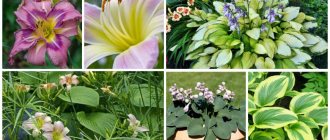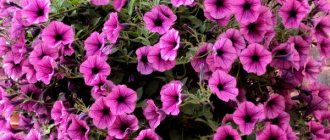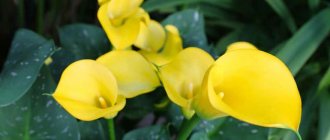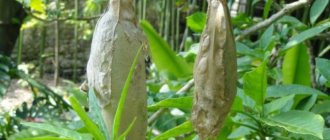Anemone is one of the most suitable flowers for growing in temperate climates. In its natural environment, this plant just does not like heat, preferring stony, rocky bases and poor soils.
It is resistant to winds (hence the second name - anemone), unpretentious to temperature and sunlight. Dear readers!
For you, we have created communities on social networks in which useful articles and interesting ideas are published several times a day! Subscribe and receive useful content in a convenient format! There are more than 160 varieties of Anemone, which grow at different rates and can bloom at completely different times of the year. Varieties often differ from each other in appearance, including significantly. Thanks to this property, you can surprisingly harmoniously diversify your flower garden if you give preference not to one Anemone variety, but to several at once.
Under ideal circumstances, a flowerbed consisting entirely of Anemones can delight the eye with its blooms almost throughout the entire warm season.
What is anemone (anemone)
Anemone is a perennial plant belonging to the ranunculaceae family. Outwardly, it is very similar to poppy. However, different varieties can differ significantly from each other in color, leaf shape, time and duration of flowering.
In general, most Anemone is a bush with small shoots, thin leaves and flowers rising high on strong stems.
When it comes to wildlife, Anemones prefer mountainous terrain. They can often be found in water meadows in temperate climates, in both hemispheres.
In Russia and neighboring countries, these plants are quite popular in summer cottages. The most widespread are low flowers, reaching a maximum of 30 cm. Tall Anemones look more impressive, but require thorough care and constant care.
3. Varieties of anemone:
3.1.Oak forest anemone - Anemone nemorosa
A very attractive small flower with erect vertical stems of burgundy or bright brown color. Each stem bears at the top a single white, pink or purple flower with 6 rounded petals and numerous, long, yellow stamens. The leaves are green, complex, intricately carved. There are terry varieties.
↑ Up,
3.2. Crown anemone - Anemone coronaria
Perennial, very brightly colored, bulbous plants. The leaves are green, compound, pinnately separate, arranged alternately. The flowers are large, single, showy - white, red, blue or pink.
↑ Up,
The petals of each flower can be colored in several tones. The flowering period is long - up to 4 weeks. One of the varieties of crown anemone is the Bridget anemone - the owner of very large, bright, double flowers.
↑ Up,
Features of cultivation
The main feature in growing Anemone is the nature of the root system of the flower. All varieties can be divided into:
- Tuberous.
- Rhizomatous.
The latter are the most unpretentious both in terms of weather conditions around them and in terms of maintenance. Anemones with rhizomes easily grow in poor soils and withstand wind, heat and inconsistent watering.
Tuberous ones are the opposite. They definitely need to be taken care of carefully:
- For example, plant them with seeds and only before winter.
- Planted flower beds must be covered for the winter. Fallen leaves or tops from the harvested crop are suitable for this.
- With the onset of heat, water the flowers, loosen the soil and remove weeds.
- In the fall, fertilize the bushes with standard mineral fertilizers.
But tuberous varieties, with proper care, grow much stronger and stronger than rhizomatous varieties. Anemones with tuberous roots have noticeably larger flowers. With bright, massive petals, they rise quite high (the highest varieties reach 1.5 m), which, undoubtedly, only ennobles any flower bed where they grow.
Features of planting a flower in open ground
Anemone can be planted in open ground in the three most common ways :
- tubers;
- seedlings;
- seeds.
One of the simplest options is to plant the tubers immediately in a permanent place. It will be a little more difficult with transplanting using the seedling method. The most difficult way is to germinate seeds directly in the open ground, since this requires a suitable climate, an optimal ratio of humidity and soil characteristics.
Planting with tubers
Planting Anemone with tubers is a simple matter. The only important point is that you need to determine the growth point. That is, the tuber should be located in the hole with this point up.
Anemone tubers
Seeing the growth point is also relatively easy. To do this, the tubers should first be soaked in warm water. The swollen tubercles on the tuber will be the same growth points.
Another tip: experienced gardeners who are interested in propagating Anemones notice that the growth points on the tuber are located mainly on the flat side. This means that you need to plant the tuber with the sharp end down.
How to choose planting material?
Giving preference to planting Anemone with tubers, it is important to be able to choose high-quality planting material in the spring.
- Firstly, you should pay attention to the external condition of the tubers. It is better to get rid of rotten and too small tubers immediately.
- If the root is large, but there is a rotting or simply damaged part on it, then the affected area can be carefully cut off. The rest of the tuber is suitable for planting.
- You definitely shouldn’t put several tubers, even small ones, into a hole at once. In fact, this will definitely not lead to anything good. In the worst case, nothing will grow in this place. In the best case, very soon you will need to plant bushes that have grown too densely.
Before planting on the site, it is advisable to soak the tubers in a weak solution of potassium permanganate. This will help get rid of harmful bacteria.
Holes about 15 centimeters deep are prepared for the tubers. Next to the planted Anemone, you can sprinkle a little humus and sawdust to feed and retain moisture, and then cover the bed with soil.
How to soak tubers before planting?
There is no consensus on the need to soak Anemone tubers. Some people do without this procedure.
Supporters of a different opinion are sure that it is absolutely impossible to do without treating the tubers with a weak solution of potassium permanganate after winter. Thanks to this treatment, it is possible to prevent rotting, diseases and the proliferation of pests in the soil.
Anemone tubers can be removed from winter storage areas already in mid-April, about a week, maximum two, before planting in the ground. At first, the tubers can be stored in a warm and dry room. You can plant them even with sprouts that have appeared. This will make it even easier to determine growth points.
It is not necessary to keep the roots in the potassium permanganate solution for a long time; you can limit yourself to just a half-hour or hour-long procedure. After this, they immediately begin planting.
Soaking anemone tubers
How to sow seeds outdoors?
Anemones are relatively easy to grow from seeds, but if you plant the plants immediately in a permanent place, the first shoots will hatch rather slowly: after about a year.
It is much easier to germinate seeds at home first. This is how it is possible to maintain optimal levels of humidity, light and temperature, constantly monitoring all indicators.
In the second year, the sprouts can be planted in open areas. You should only take care of good protection from wind and too bright sun. Then monitor the correct frequency of watering, and cover the bushes with foliage for the winter.
If everything is done correctly, then the first flowering of Anemone can be achieved no earlier than three years after planting the seed.
What kind of soil do plants need?
Despite the fact that most Anemone varieties are famous for their unpretentiousness to external conditions, it is still advisable to prepare the soil before planting.
First of all, Anemones love loose soil. If the ground on the site is hard, then you can add sand to it. Sand, by the way, will at the same time increase the drainage of the upper layers of the earth, which will contribute to the correct and rapid growth of the rhizome.
In areas where acidic soils predominate, wood ash or dolomite flour added in a thin layer on the surface will help correct the situation.
It is believed that the most suitable soil for growing Anemone is loam with peat . It will contain enough minerals for growth, it allows the optimal amount of moisture to pass through, and it is also relatively light and loose for the germination of fragile and, frankly, weak roots (we are talking about root anemones). Ordinary deciduous soil with humus is also suitable.
How to choose a landing site?
Anemones in a flowerbed
When choosing a place for a flowerbed with Anemone, you need to pay attention to the following characteristics:
- For very young sprouts, a place protected from drafts is best suited. The young roots of the plant are so weak that in an open area they simply cannot withstand strong gusts of wind.
- Also, for young plants you should choose partial shade or even completely shady areas. Intense heat, and especially direct sunlight, greatly dries out the soil around Anemone bushes and makes it impossible for them to grow quickly.
- At the same time, it is worth making sure that Anemone has enough space to grow. Between the bushes you need to maintain a step of 30-40 cm. The same rule applies to the distance between the beds.
For all the above reasons, the best places for Anemone bushes include the courtyard of private houses, areas next to garden trees, flower beds along fences and walls.
Flower beds with anemones
Planting anemones in open ground
The place for planting tuberous anemones should be protected from drafts; the recommended light level for different varieties may be different. The requirements for the soil are exactly the same - it must be loose, breathable, fertile and, preferably, alkaline.
Before planting in open ground, first dig up the area, removing all pebbles and weed roots. Tuberous anemones have a negative attitude towards stagnant water in the soil, so they are not placed in damp places, and planting holes are drained before planting. Crushed stone, gravel or broken red brick are perfect for drainage.
The easiest way is to plant tuberous anemones in open ground, pre-sprouted in peat pots: in this case, they will simply need to be placed together with the pot itself in planting holes located at a distance of at least 20 cm from each other.
When planting tubers directly into the ground, there is no need to additionally germinate them after soaking. The recommended distance between plants remains the same. Planting scheme - depending on the size of the tubers:
- 1 cm – 50 pcs. per 1 sq. m;
- 1.5 cm – 20 – 30 pcs. per 1 sq. m;
- 2 cm – 20 – 25 pcs. per 1 sq. m.
It is recommended to bury tubers measuring 1 - 1.5 cm into the soil by 4 - 5 cm, larger specimens - by 8 - 10 cm. Planting algorithm:
- make holes about 15 cm deep;
- put some humus and ash on the bottom;
- place the tuber so that the flat growing point is directed upward and the sharp end is directed downward (if in doubt, you can plant it on its side);
- sprinkle with earth.
It is necessary that the soil is well moistened. The first shoots should be expected in 20 - 25 days.
How to care for seedlings?
Seeds or even small roots may be suitable for Anemone seedlings. They need to be planted in a fairly spacious box with fertile and moist soil. It must be said that maintaining humidity is a very important point that must be monitored especially carefully.
When selecting soil, you should be guided by the following qualities necessary for proper flower growth:
- The soil should be loose and well-drained (it would be useful to add pebbles, ash, sawdust).
- Too acidic soil is harmful to Anemone. Therefore, the alkaline balance should be reduced by adding ash, humus, and fine-grained sand.
- When sprouts appear, you can take the rule of weeding (with a fork, knife) - this will provide air access to the roots.
Whether seeds or roots, they all take a long time to germinate. Usually only a year after planting the first shoots begin to hatch.
All this time, you can maintain normal room temperature next to the box (although it is better that the air is slightly colder than normal: about +16 C), do not fertilize the soil, but only water it 2-3 times a week.
Germinated Anemone sprouts are ready to be transplanted into open ground when at least 4 leaves are formed on them . The optimal time for transplantation is the end of April, beginning of May.
For seedlings on the site, you need to prepare small holes, no more than 5 cm deep. It is recommended to maintain a distance of at least 30 cm between sprouts.
At the end of the work, the flowerbed should be watered. If desired, add fertilizers rich in minerals.
The Anemone will then take root in its new location. Before winter, you can remove all the tops (the above-ground part of the plant under the root) and cover the root with it. The next season after planting, the first flowers should appear.
Anemone seedlings
Features of caring for adult plants
It is always relatively easy to care for adult Anemone bushes (and all plants starting from the 3rd year of life are considered such). A lot of fertilizing is not required; the flower is also unpretentious in terms of light levels. Perhaps you will have to pay a little more attention to the frequency of watering. And this only applies to tuberous varieties.
in spring
Spring is the time to plant most Anemone varieties. The most favorable period in the middle zone is mid or late April.
There is no single rule whether to feed Anemone in the spring or not. However, if fertilizer is nevertheless applied (mineral mixtures are best), then until spring you can only water the flower and not worry about anything else.
In the spring, Anemone in a temperate climate has enough moisture even without artificial watering. But to speed up growth, you can make it a rule to moisten the soil next to the bush no more than once a week.
Anemone in spring
In summer
Moderate summer is the ideal time for Anemone to bloom. At this time, some varieties do not require any care at all.
However, if the weather becomes too hot, it is recommended to water the bushes. The best time to water is early morning or evening after sunset.
Fertilizers may not be applied at all during the warmest time of the year. But if you wish, you can limit yourself to adding manure. The main thing is that it is not fresh.
Anemone in summer
in autumn
In autumn, the frequency of watering is reduced to the spring level (once a week). In the latest varieties, flowering can continue until the end of November.
When the plant fades and begins to shed its green cover, you need to remove the tops at the root. If a warm winter is expected, then the flowerbed may not even be covered. Otherwise, it is better to cover the remaining roots or tubers with removed leaves, tops, etc.
Anemone in autumn
Flowering conditions
In general, Anemone begins to bloom quite early even without thorough care. Some varieties even bloom twice a year.
What you will need to especially watch out for is:
- So that the bushes are planted in partial shade. Too much sun can harm the plant. As well as the complete absence of sunlight - too.
- Do not overdry the soil near the bush. If necessary, water additionally as needed.
- Monitor the appearance of pests and remove them in a timely manner (remove them manually).
Otherwise, you can cope with care even without serious experience under your belt. So most of the planted Anemone bushes are sure to bloom.
How to care after flowering?
Typically, Anemone can fully bloom from April to October or even November. But much, of course, depends on the variety and care.
When the Anemone fades, before the first frost it is recommended to treat and hill up the area, covering the bushes well with soil. After the first frost, it is permissible to dig up the bush and separate the tuber from it. The above-ground part is discarded.
Advice: It is not at all recommended to dig up flowers at a time when the leaves on them are still green. This condition indicates that nutritional processes are still taking place in the tuber, and the plant is not ready for winter.
In regions with relatively mild winters, you can limit yourself to only cutting off the above-ground part of the bush and leaving the tubers in the winter. Light frosts will not harm the root system throughout the winter.
In some cases, it won’t hurt to cover the area with Anemone tubers with fallen leaves or removed tops from other garden crops. This will minimize the impact of sudden temperature changes throughout the cold season.
However, if winters in the region are characterized by severe frosts, then it is better to completely dig up the tubers, dry them and store them until future planting in the spring.
Dug up anemone tubers
Growing rhizomatous anemones or propagating them by division
It is optimal to divide the rhizomes in the spring. This is explained by the fact that during this period the movement of sap inside the plant is somewhat slower, which means the flower will be able to take root normally after division.
Note! Propagation by dividing rhizomes should be performed only with anemones older than 4-5 years.
What needs to be done to divide anemone rhizomes:
- Dig up the rhizomes yourself.
- Cut into pieces 5-6 centimeters long and each with at least one, and preferably several, renewal buds.
- Plant horizontally in a previously prepared hole to a depth of the same 5-6 centimeters.
How to store in winter and prepare for wintering?
Preparing an Anemone tuber for wintering is quite simple. Conditions for normal storage are no different from similar crops and flowers:
- An ideal place is a basement with minimal access to light and a constant temperature from +1 to +7 C.
- The humidity level is acceptable within 80-100%.
But remember that high humidity along with heat can ruin all the tubers, as they begin to sprout and rot.
Advice: if there is not enough space for all the tubers, then they can be stored in boxes, in several layers. It’s even better if you sprinkle the roots with a layer of wet sand.
One option for storing bulbs is to wrap them in printing paper. Such a lump can be buried in sawdust or sand and thus leave the tubers until spring.
Watering
Anemones do not like too dry and hot climates. Based on this, you need to regulate the frequency of watering.
In the conditions of central Russia, in spring and autumn, it is enough to irrigate the beds with Anemone 1-2 times a week. In summer, when most varieties are at their peak flowering, the frequency of watering should be increased.
But you should pay attention to the fact that if the summer is rainy, then you may not need to additionally water the Anemone bushes.
On the other hand, when there is no rain at all, watering can be done even twice a day: in the morning and in the evening.
How to choose the right tubers
The key to successful cultivation of tuberous anemone is the purchase of high-quality planting material, which can be purchased in specialized flower shops towards the end of winter. Most often, tubers are sold in branded packaging, which contains recommendations for storage and planting dates. As a rule, they have already been treated with fungicides to prevent various diseases.
Important! It is worth choosing tubers made by trusted manufacturers. When purchasing, you must pay attention to the integrity of the packaging and the appearance of the planting material.
As can be seen from the photo, anemone tubers, as a rule, are irregular in shape and have a small size (1 - 3 cm). They look like flattened dried lumps with an uneven surface with tubercles, grooves and growths. Depending on the variety, their color can be brown or dark earthy.
In healthy specimens, the color is uniform, there are no black spots or traces of mold on the surface. They are solid to the touch and there should be no voids inside. When purchasing planting material in a retail chain, it is important to know that it has a fairly low germination rate: out of 5 tubers, usually only one is viable.
Top dressing
In terms of feeding, Anemone is one of the most undemanding flowers. Enrichment of the soil with minerals is required only once a year - in the fall. And even then only if no fertilizers were used at all when planting in the spring.
In the summer, when flowering is in full swing, it is allowed to fertilize the top layer of soil with organic fertilizers (but strictly not with fresh manure!).
After applying fertilizers, many gardeners note that it is better to weed and loosen the beds with Anemone. But under no circumstances should you use large hoes for this, as there is a risk of damaging the very thin roots of the bushes.
Reproduction
Several methods of Anemone propagation are widely practiced in the horticultural environment:
- tubers;
- seeds;
- dividing roots or bushes.
All methods are almost identical to each other, so which one to choose is a personal matter.
Propagation by tubers
Perhaps the most common method is for those Anemone varieties that are called tuberous.
The main part of the root - the tuber - can remain in the ground, and new Anemone bushes will grow from it every year. Or, if the climate does not allow it, the tubers are dug up and stored in a cool and not too damp place.
But tubers can also be dug up for Anemone propagation. The largest roots are suitable for division. Before planting, they can be divided into several parts with a sharp knife.
Then the tubers are planted in separate holes at a distance of about 30-40 centimeters from each other.
Seed propagation
Anemone seeds
When propagating Anemones by seed, it is worth considering that the seeds have a low germination rate. Under normal conditions, only about a quarter of the sown material sprouts.
Advice: stratification or hardening of seeds will help greatly increase germination. You can influence the cold by planting the seeds in separate boxes and leaving them in a cool place (about +5 C) for 1-2 months or even sowing the beds before winter in the open ground.
It is worth planting seeds at the end of spring, when night frosts no longer occur. However, different varieties can be planted in different ways to ensure that the flower bed blooms consistently for as long as possible until late autumn.
Anemone from seeds sprouts quickly, but the plant’s first flowering occurs only in the second year after planting.
Reproduction by dividing the bush
Anemone propagation is sometimes practiced by dividing the bush. But it is worth recognizing that this method requires a lot of experience and accuracy.
Firstly, only mature plants that have been growing in one place for at least four or five years are suitable for it.
The method can be used in summer or autumn, when the bush has formed as well as possible after winter. For the procedure, you will need to dig up the entire Anemone and divide the bushes so that each new seedling has its own root.
New shoots are planted either immediately in new soil nearby, or in seedling boxes. If there is a harsh winter ahead, then, of course, it is better to germinate new Anemone bushes in more suitable conditions: for example, at home or in a warm barn in a specially prepared container.
Propagation by roots
Anemones are divided by roots in the spring. To do this, you need to dig up the entire root and divide it into separate rhizomes. The main condition: that each root has a bud for growth, and also reaches at least 5 cm in length.
Individual roots are planted in loose and fertile soil, digging in to a depth of only 4-5 cm. As they grow, you will need to pay special attention to watering. It is not allowed to overdry the soil. This means that in the summer, if there is no rain for a long time, it is imperative to organize watering in the morning and evening.
The method of propagation through the root system is the longest in time. The plant reaches adulthood only 3 years after planting.
Anemone roots
Planting methods and patterns
There are many ways to propagate anemones - by seeds, tubers, dividing bushes or roots. The seed planting method is considered the least effective, since the seed material has a low germination ability. Plants with tuberous rhizomes can be propagated by dividing the tuber, each part having at least one bud.
Holes for future plants are made at intervals of 15–20 cm for tall specimens and 5–7 cm for low ones, and growth buds are buried 3–5 cm from the soil surface. The diameter of the holes is at least 30–40 cm. It is better not to compact the soil, but simply lightly sprinkle the seed, otherwise the plants will not be able to hatch through the thick layer of soil. Immediately after planting, anemones should be watered generously.
Popular varieties and types
There are more than 160 different species of Anemone. But some of them are the most popular. Some are surprisingly easy to care for, while others amaze the imagination with especially interesting colors during flowering.
All varieties can be divided according to the time of flowering: spring or summer flowers .
And also according to the shape of the root system: tuberous or rhizomatous . Rhizomes, as a rule, grow quickly and begin to bloom in May. But they also retire early - in July-August. Tuberous ones take a long time to form, but will delight you with flowers until late autumn.
Forest anemone
Among the main differences of the Wood Anemone are the wide roots of the leaves, as well as rather large flowers.
Thanks to its dense greenery, although the forest Anemone grows quite short (up to half a meter), it forms a dense and beautiful bush. Some varieties produce especially large flowers, up to 6-8 cm in diameter.
Crown anemone
Crowned Anemone species will provide several advantages at once. The most famous varieties:
- De Caen (different colors, depending on the variety);
- Mr. Fokker (blue flower color);
- Don Juan (bright red double flowers);
- Lord Jim (blue color).
The main positive quality of crown anemones is that they bloom in early summer and autumn - that is, twice a year.
At the same time, the bushes look amazing, sometimes reaching a height of one and a half meters. Such a garden is crowned with large and bright flowers that rise on strong and thick legs.
Japanese anemone
Japanese Anemone, or as it is also called, hybrid Anemone, has flowers formed in a special way. They ripen in whole inflorescences, similar to clusters.
Japanese Anemone grows no more than 40 cm in height. It is characterized by different colors of petals, but mostly pale blue and white shades prevail.
Anemone tender
One of the smallest Anemones known to man. The bushes barely reach 10 cm in height, and for the most part stop at 5 cm in height.
The most common varieties:
- Blue Shades (gray-blue flowers);
- Charmer (pale pink flowers);
- White Splendour (white flowers).
Tender Anemones have developed foliage that covers the lower part of the bush with a dense blanket. The flowers are large (especially relative to the size of the flower itself), with well-developed petals. Each bush produces several flowers at once, so the flowerbed always looks colorful.
Anemone buttercup
These varieties are notable for the fact that they grow on almost any soil, even those very depleted in nutrients.
And although the bushes of Buttercup Anemone are not very attractive (they grow only up to 20 cm in height, small yellow flowers form on them), it can be considered as a variety for the garden.
When to Plant Anemones
You can plant anemone tubers in the ground only in the spring, when it warms up well. But then the anemones will bloom, depending on the region, only by the middle or end of summer, and this does not suit everyone. For the early appearance of buds, the tubers are planted in peat cups and kept in a cool room. When warm weather sets in, they are buried in the ground level with the soil surface.
There is no need to use plastic or plastic containers to germinate anemone. When the time comes to plant anemones in the ground, they will have to be removed from the containers. It’s so easy to damage the roots, besides, the earthen lump can crumble in your hands, and all the work will go down the drain, and you’ll have to throw out the tuber. It is better to use peat cups; anemones are planted with them.
Anemones can be used for forcing. Then the question “when to plant” disappears by itself. You can force anemones at any time, which is what people have been doing for many years who have been growing crown anemones from tubers for cutting.
How to grow in a pot?
There are many known cases when Anemone is grown at home, in pots. Since this plant is not very demanding of care and external conditions, there is nothing complicated in this process.
On the contrary, at home, under ideal circumstances (especially not too hot and not too dry), these flowers can bloom continuously for up to 5-6 months a year. Another important point is that you will need to create good lighting at home, which will last at least 12 hours a day. Otherwise, the flower will remain half asleep almost all the time.
The Decaine variety is in greatest demand for growing in pots . But other varieties of Anemone can grow quite successfully on balconies, in flower pots and simply on window sills.
To grow, you should take a fairly large pot in diameter (from 20 cm), in which you plant 5-6 seeds, 2-3 tubers or 2-3 seedlings.
Fertile mixtures with good ability to pass moisture are suitable as soil. If you prepare the composition yourself, you need to add humus, sand, and sawdust. About a third of the pot should be small stones to improve drainage.
You can feed domestic Anemones only once a year in the spring. It is better to use purchased mixtures rich in minerals.
Place the pot in a well-ventilated area. In terms of temperature, it is better to adhere to the rule: the lower, the better. It is known that in the range from +7 to +16 So Anemone feels best.
The plant should be watered 2-3 times a week. At the same time, you should not spray the leaves of Anemone, as this can provoke the development of putrefactive diseases.
Anemones in a pot
Landing place
Anemones grow best in light, fertile soils with good drainage and breathability. The best option is turf soil or loam with peat. If the soil is too dense or wet, it is necessary to add river sand before planting. Substrates with high acidity are also not suitable for planting - to achieve a neutral or slightly acidic reaction, you must use dolomite flour or wood ash.
Anemones grow best in light, fertile soils with good drainage and breathability.
The area should be well lit by the sun or be in light shade - planting crops in the shade is not recommended, otherwise the plants will not bloom or will lose their elegant appearance, becoming dull and small. In addition, anemones need space, since their rhizomes can grow greatly, as well as protection from drafts. Before planting, the area should be dug up and, if necessary, fertilized with humus or compost.
What is anemone forcing and how to do it by March 8?
Anemone is the same plant that can bloom at any time of the year. The main thing is to comply with all the necessary conditions.
For example, in order for Anemone to please with bright and developed inflorescences by March 8, its tubers should be planted around December-January. At the same time, you can plant already grown seedlings. If you give preference to seed planting, it will take about a year for a normal plant to form that can bloom.
It is important to maintain a low room temperature throughout the growth period. The best option is +12-15 Co. In addition, it is important not to forget that with a lack of light, especially in winter, Anemone does not develop, but freezes. If you don’t notice this in time, it’s easy to flood the flower and ruin it.
How to grow anemones - reviews from gardeners
For more than 10 years I have been growing tender anemone in the country. It begins to bloom early and after the first frosts it pleases with a beautiful flower bed. For the winter, I do not uproot the tubers, but cover them with agrofibre or leaves. I propagate exclusively by rhizomes. They take root well.
Irina Tishchenko, Moscow
Our winters are not cold, so I don’t pull out the anemone. I have several varieties of Japanese and crown anemone growing. The crown grows a maximum of 20 cm, but blooms well. I water it every day because it rarely rains in summer.
Nadezhda Kovtun, Yeisk
In summing up, it should be noted that the anemone flower has about 170 species, each of which includes many varieties. You can grow anemone in any climate and at any time of the year, the main thing is to choose the appropriate plant.
Diseases and pests
Anemones rarely get sick or suffer serious pest attacks..
When growing Anemone, you can sometimes encounter root rot. But it arises only under human influence, namely due to uncontrolled watering.
Sometimes slugs or snails settle on Anemones, which spoil the appearance of the flower. A metaldehyde solution will drive away pests for a long time (use strictly according to the instructions). But, of course, the pests that have already appeared will need to be collected manually.
But if the plant has leaf nematodes or winter worms, then most likely you will have to get rid of the damaged bushes, and remove the top layer of soil under them and move it away from healthy Anemones.
Common mistakes
It can be noted that it is very difficult to make a mistake when growing Anemone. This is a truly unpretentious and very persistent flower. In many ways, it grows completely on its own.
Therefore, the main problems are often associated with trying too hard. The easiest way to spoil Anemone is to water it more than normal. Almost always, the moisture it receives from dew and rain is enough for it.
Quite often, Anemone is dug up every time for the winter. Although in mild winters it is enough to simply cover the flowerbed with leaves and greenery from the harvest.
Finally, do not forget that Anemones are quite whimsical in terms of temperature, preferring coolness and a fresh breeze. On the contrary, too sunny and open areas will adversely affect the growth of this plant.
General information about the plant
Anemone or anemone is a herbaceous perennial. The plant is grown in regions with temperate climates.
Important characteristics:
- number of species in nature – more than 140;
- popular name - anemone;
- shades of petals: white, yellow, pink, blue, crimson pink, cream, lilac, red. Plain petals + a contrasting middle or a bright border around the edges look impressive;
- bush height – from 30 cm to 1.5 m;
- many varieties do not tolerate the scorching rays of the sun, preferring partial shade;
- some species native to the Mediterranean (tender and crowned) love the sun and open areas of the garden;
- some varieties of anemone are shade-tolerant;
- anemone tubers are a cross between carrots and potatoes, the shape is oval, one end is sharper, the other is quite rounded, irregular in shape;
- The flowering period in open ground is from April to November. Some species bloom before the leaves appear on fruit trees. With the right selection of varieties, the bright colors of anemones delight the eye from mid-spring to late autumn.
Answers to popular questions
When is the best time to plant?
It all depends on the variety. Most Anemone species are ready for planting in mid-spring. Some can be planted in summer to achieve fall flowering.
At home, Anemone can be planted even in winter in order to enjoy the first flowers in early spring.
When are anemones dug up for the winter?
At the end of autumn. The ideal situation is that the plant has completely bloomed and has begun to shed its leaves.
How to collect seeds?
Many Anemone species are self-seeding. To collect seeds, it is recommended to dig boxes with fertilized soil next to the flowerbed while the bushes are flowering. Seeds will naturally fall into it.
For the winter, the box is placed in a warm, but not hot place. In spring you can already expect the first shoots to appear.
Which side to plant and how to determine top and bottom?
Anemone tubers should be planted with their growth point facing upward. Everyday advice says that most of these points are on the flat side of the tuber. This means that the opposite, sharp part should be directed downwards.
Conclusion
Anemone is a completely easy-to-care flower, which, nevertheless, has several advantages that determine its popularity. Anemones are extremely diverse (160 varieties), they can easily decorate any flower bed, and are well adapted to the temperate climate of Russia.
In a word, caring for Anemone is pleasant and easy. For this reason, it is perfect for not the most experienced summer residents. On the other hand, excellent appearance and truly inexhaustible possibilities for creating a unique design in the garden are excellent characteristics for avid gardeners.











